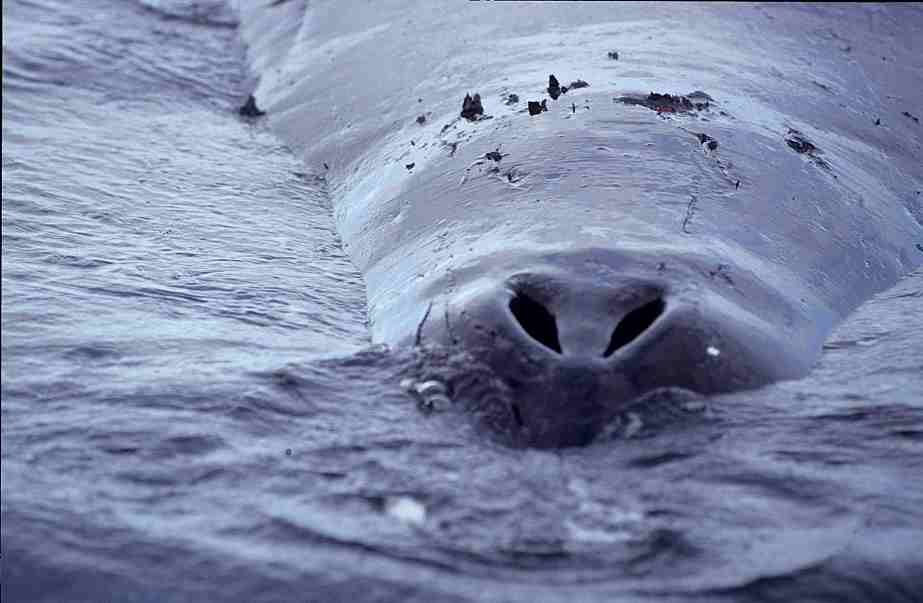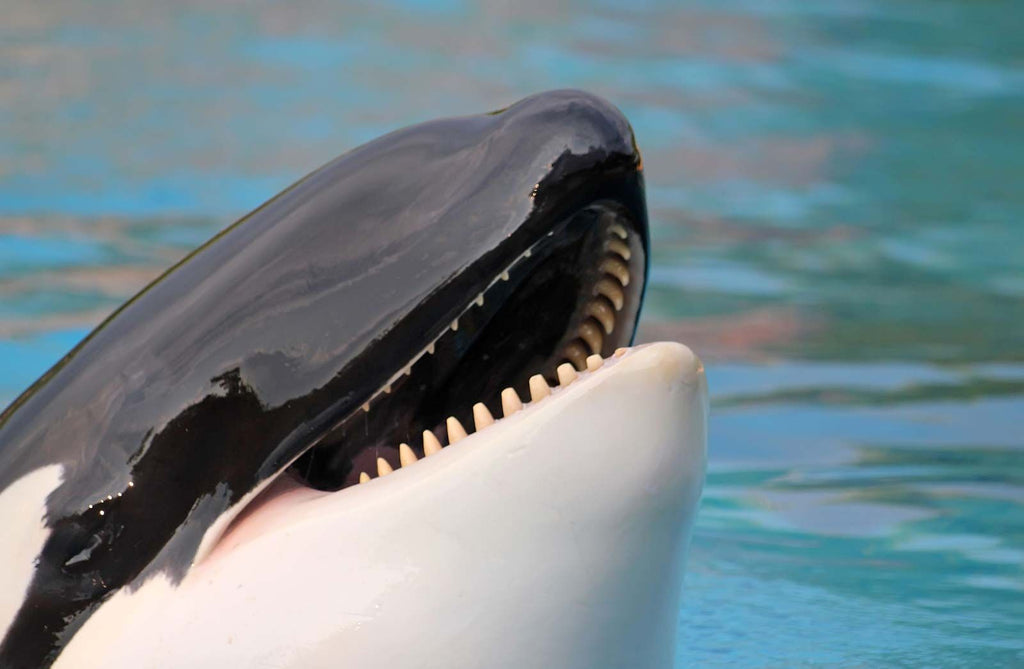Whales and SUP
Table of Contents
1.Whale Introduction
2.Whales in Ecosystem
3.Threats to Whales
4.Whales and SUP
What Do You Know About Whales
Have you ever wonder which animal is the largest one in the ocean? The answer is whale!
Whales look like fish but they are not any kind of fish exactly. They are a widely distributed and diverse group of fully aquatic placental marine mammals, which means whales are just like we human are, that is, they are warm-blooded, giving birth to live young as well as breathing air.
In fact, fish breathe through their gills in the water to get the oxygen dissolved into the water, while whales as evolving from land-living mammals regularly breathe through their lungs and need to come up to the surface to get their oxygen from the air, though they can remain under water for long periods of time with modified nostrils located on top of their heads to take in or expel air. Based on this reason, here comes a strange news that whales might drown if they fall asleep for too long.
Although whales are warm-blooded animals, they don’t mind cold waters. Because their thick fatty insulation called blubber keeps them warm, which also helps their heavy bodies float and gives them energy when fasting.
Whale Clan
As a big family, whales are broadly classified into two groups. They are baleen whales and toothed whales.
As a general rule, whales can range in size from small sperm whales of 2.6 meters (8.5 feet) and 135 kilograms (298 pounds) to blue whales, the largest known creature that has ever lived, of 29.9 meters (98 feet) and 190 tons (210 short tons). So the second difference between them is regularly that baleen whales are larger in size as compared to toothed whales.
There are 15 species of baleen whales, which includes the blue whale, humpback whale, bow-head whale, gray whale, sei whale, fin whale and others. They all have baleen plates in their mouths to sift their food - plankton, krill (little shrimps) and small fish - from seawater.
For this whale family, the good news is that, an entirely new species of fin whale was discovered in the Gulf of Maine in 2021!
As for the toothed whales, they account for most species of cetaceans and include everything from the massive sperm whale to beaked whales and all dolphins and porpoises. There are killer whale, narwhal, beluga whale and sperm whale and so on. They have teeth to hunt and eat mainly larger fish, squid, octopus and some eat other marine mammals but not for chewing.

How Whales Work in the Ecosystem
Whale Pump
Marine biologists have discovered that whales play a vital role in the marine ecosystem where they help provide at least half of the oxygen we human breathe, capture tonnes of carbon from the atmosphere, and sustain fish stocks.
In the sunlit waters lives a tiny forest of tiny plant-like organisms called phytoplankton. Like plants on land, phytoplankton need energy from the sun, water, carbon dioxide, and nutrients such as iron and phosphate for photosynthesis; The process provides them with food, supplies the planet with oxygen and is a means to combat climate change. As the basis of Marine food webs, phytoplankton are a key component in maintaining fish populations. As they soak up carbon dioxide, phytoplankton sequester hundreds of thousands of tons of carbon each year, helping to combat climate change.
Unlike plants on land, phytoplankton cannot take root on the ocean floor to get the nutrients they need. Where did they get it? Research shows that whales bring it to them! Because whales cannot "poop" under pressure, they potty on the surface of the ocean, and by doing so, provide life to phytoplankton, providing nutrients such as iron, nitrogen and phosphorus. Whales are the ocean's gardeners, tending the phytoplankton forests we all depend on. Because whales migrate, they redistribute nutrients at different latitudes. This process is called "whale pump."
Whale fall
When whales die, they fall into the deep ocean, providing plenty of habitat for Marine life. There is 407 species diversity in the world. Like phytoplankton, they also carry a lot of carbon that helps balance our climate.
Deterioration of whale carcasses happens though a series of three stages.
Initially, mobile creatures such as sharks and hagfish remove soft tissue at an extremely rapid rate over a period of several months to two years.
Subsequently, over a period of time, opportunists such as crustaceans and polychaetes enriched the bones and the surrounding sediment, which contained organic matter.
Finally, sulfophilic bacteria reduce the release of hydrogen sulfide from bones, which promotes the growth of chemoautotrophs that support the growth of other organisms such as mussels, clams, limpets, and conches. This phase can last for decades and supports a rich assemblage of species, averaging 185 species per site.
Human And Whales
Whaling
Human whaling has been around since the Stone Age. When ancient whalers went out to sea, whalers impaled these larger animals with harpoons.
Commercial whaling was an important industry throughout the history of the 17th, 18th and 19th centuries. At that time whaling was a considerable industry in Europe, with ships from England, France, Spain, Denmark, the Netherlands and Germany sometimes cooperating to hunt whales in the Arctic, sometimes competing and even leading to war.
By the early 1790s, whalers, namely Americans and Australians, concentrated their efforts in the South Pacific, killing mainly sperm and right whales, with Americans alone capturing as many as 39,000 right whales.
After 1982, the International Whaling Commission (IWC) imposed a moratorium that set limits for each country until 2004, with the exception of indigenous groups, whaling fell sharply. Since then, these "subsistence" hunters have made a profit of nearly $31m (£20m) a year.

Other Threats
Whales are also affected by Marine pollution. Large amounts of organic chemicals accumulate in these animals because they are so high up in the food chain. They have large reserves of blubber, especially toothed whales because they are higher up the food chain than baleen whales. Lactating mothers can pass the toxin on to their offspring. These pollutants can lead to gastrointestinal cancers and a greater susceptibility to infectious diseases.
They can also be poisoned by swallowing garbage, such as plastic bags. Advanced military sonar can harm whales. Sonar affects a whale's echolocation ability, which interferes with basic biological functions like feeding and mating. Whales respond to sonar and sometimes develop decompression sickness due to rapid changes in depth. Sonar activity has caused mass strandings and deaths before.
Whales are sometimes killed or injured in collisions with ships. This is considered a major threat to vulnerable whale populations, such as the North Atlantic right whale, which number less than 500.

Paddling With Whales!
The whale is unique, beautiful, graceful, and mysterious; They feed each other, build friendships, innovate, grieve, play, sing and collaborate. An estimated 13 million people went whale-watching in 2008, scattered across all oceans except the Arctic.
For your own safety and that of the whales, please treat them with the utmost respect in their natural habitat. There are two suggestions to ensure that Marine mammals live naturally without disturbance, while allowing us to observe them safely.
1. Proximity to whales and dolphins
Proximity reduces the risk of disturbing whales or dolphins.
2. When Marine mammals approach ships
If a whale approaches a boat, the boat must not go faster than 6 knots or the speed of the wake. In addition, the person operating the boat must turn off its engine or loosen its gears.
Surely there's no better way to see whales than on a paddle board! Paddleboarding with whales in the water is a dream experience for any paddleboarder. If you have a once-in-a-lifetime opportunity to get close to them during paddleboarding, be sure to film it!











Leave a comment